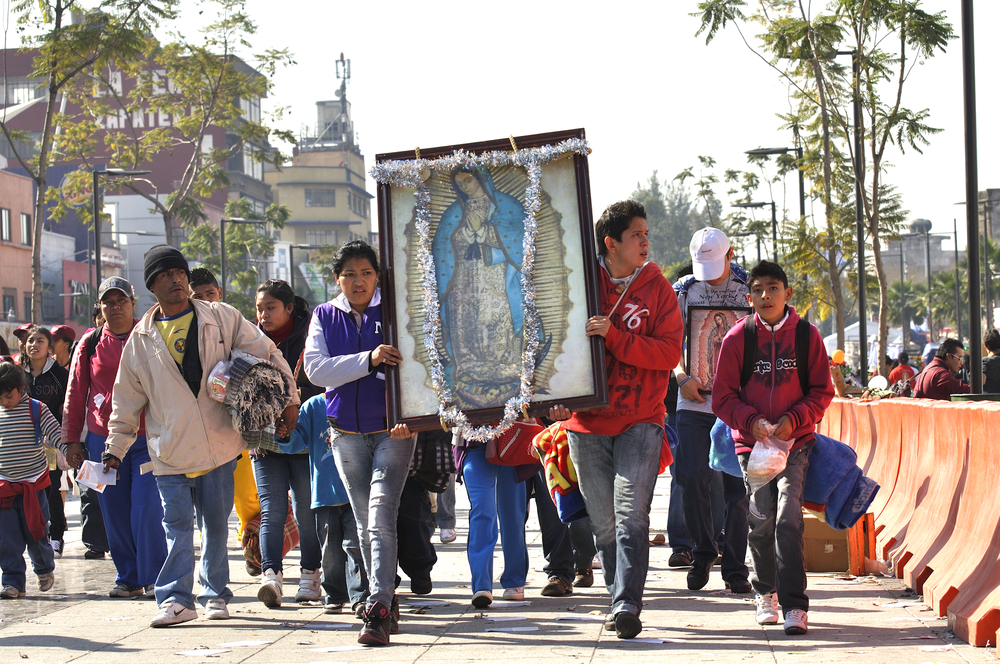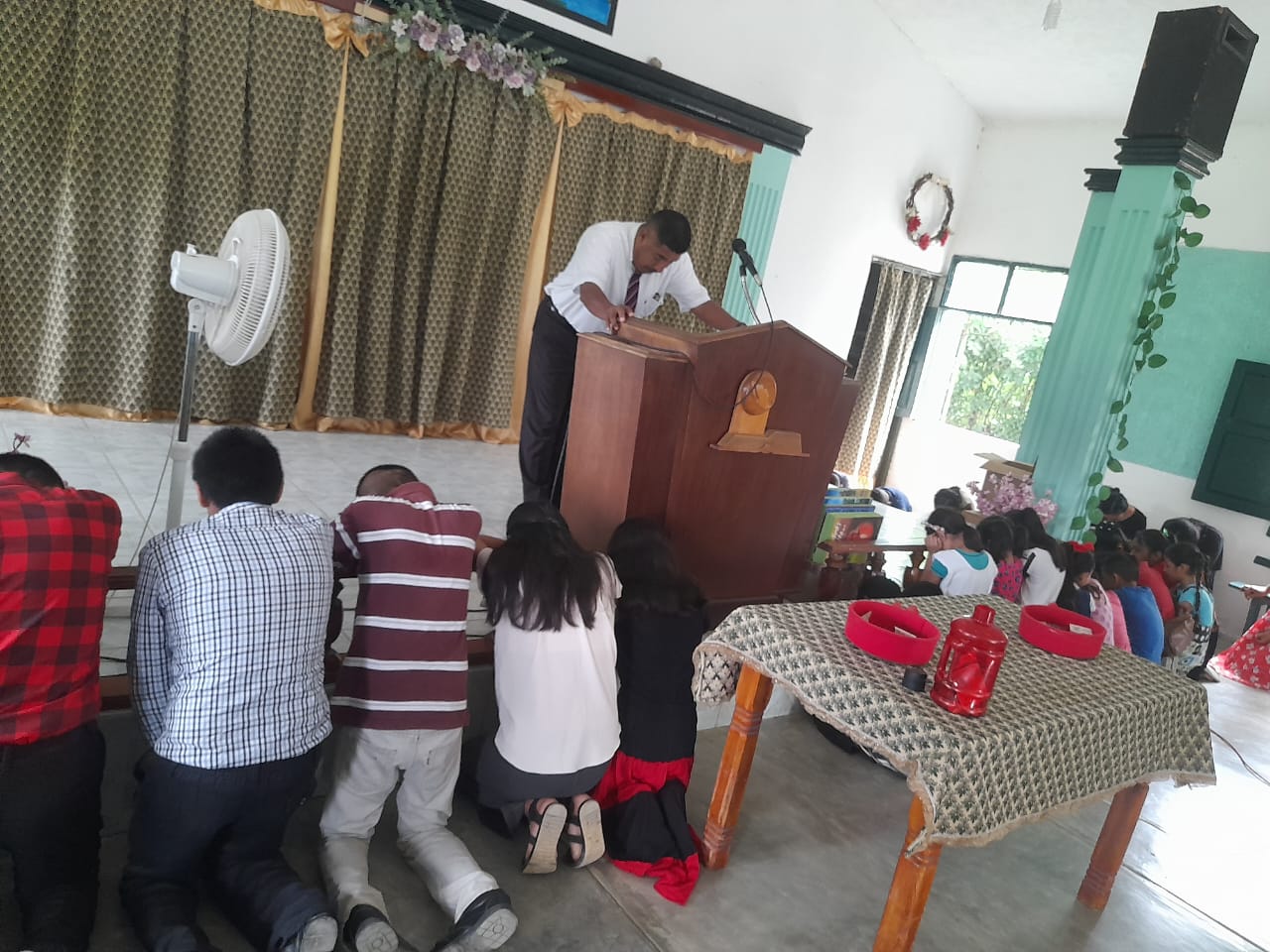Religion: Primary Religions
Roman Catholicism
Introduction: Roman Catholicism arrived in Mexico with the arrival of Spanish conquerors in the 16th century and has since become the dominant religion in the country, with millions of adherents across the country.
Origin: Roman Catholicism traces its origins to the teachings of Jesus Christ and the traditions of the early Christian church. It was brought to Mexico by Spanish colonizers in the 16th century and has since become deeply ingrained in the culture and society of Mexico.
History: Roman Catholicism played a significant role in the colonization of Mexico by the Spanish, who used religion as a tool for control and conversion. During the colonial period, the Catholic Church built many grand churches and cathedrals throughout the country, which served as symbols of Spanish power and influence. After Mexico gained its independence in 1821, the Catholic Church continued to play an important role in Mexican society, particularly during the period of conservative rule in the late 19th century.
Adherents: The vast majority of Mexicans identify as Roman Catholic, with an estimated 78 percent of the population adhering to the faith. Catholics in Mexico come from diverse ethnic and social backgrounds, including indigenous communities, and the Church has been involved in promoting social justice and human rights.
Belief System: Roman Catholicism is a monotheistic religion centered around the belief in one God, who is worshiped through prayer, sacraments, and acts of charity. The religion places a strong emphasis on the role of the Virgin Mary and the saints, who are venerated through various traditions and festivals.
Practices: The Catholic Church in Mexico holds regular masses and sacraments such as baptism, confirmation, and marriage. It also promotes the practice of charity, with many organizations dedicated to helping those in need. Pilgrimages to holy sites such as the Basilica of Our Lady of Guadalupe in Mexico City are also an important part of Catholic practice in Mexico.
Rituals, Events, and Celebrations:
- Day of the Dead: This is a colorful and lively celebration that takes place on November 1 and 2 each year. It is a time to honor deceased loved ones and celebrate the cycle of life and death. Families often create elaborate altars with offerings of food, candles, and flowers, and visit cemeteries to clean and decorate the graves of their loved ones.
- Holy Week (Semana Santa): This is a week-long period of religious observance leading up to Easter Sunday. Many Mexican Catholics attend church services, participate in processions, and create colorful carpets made of flowers and sawdust on the streets.
- Our Lady of Guadalupe: This is a celebration of the Virgin Mary, who is believed to have appeared to a Mexican peasant named Juan Diego in 1531. The celebration takes place on December 12 each year, and includes processions, traditional dances, and the lighting of candles.
- Las Posadas: This is a nine-day celebration leading up to Christmas, which commemorates the journey of Mary and Joseph to Bethlehem. Each night, families and friends gather to reenact the journey, carrying candles and singing songs.
- Quinceañera: This is a coming-of-age celebration for girls who are turning 15. It is a celebration of a young girl's transition from childhood to adulthood, and often includes a Mass at the local church, followed by a party with family and friends.
Texts: The Holy Bible is the central text of Roman Catholicism, with a particular emphasis on the New Testament. The Catholic Church also recognizes the authority of the teachings of the early church fathers, as well as papal encyclicals and other church documents.
Places of Worship: The Catholic Church has a strong presence in Mexico, with thousands of churches and cathedrals throughout the country. Some of the most famous include the Basilica of Our Lady of Guadalupe in Mexico City, the Cathedral of San Cristobal in Chiapas, and the Cathedral of Guadalajara.
Sacred Places: The Basilica of Our Lady of Guadalupe in Mexico City is considered one of the most sacred sites in Mexico, as it is said to be the location where the Virgin Mary appeared to Juan Diego in 1531. Other important sacred sites include the Templo Mayor in Mexico City, a pre-Columbian temple that was later integrated into a Catholic church, and the Sanctuary of Atotonilco in San Miguel de Allende, which is known for its elaborate murals.
Leadership Structure: The Catholic Church is headed by the Pope, who is considered the spiritual leader of all Catholics. In Mexico, the Church is organized into dioceses, each led by a bishop. Priests, who are ordained by bishops, serve in local parishes and are responsible for leading Mass and administering the sacraments.
Role in Society: The Catholic Church plays a significant role in Mexican society, with many aspects of daily life, such as
Protestant Christianity
Introduction: Protestantism is a branch of Christianity that originated in the 16th century as a response to the Catholic Church's teachings and practices. It is characterized by a belief in the authority of the Bible as the sole source of religious authority, the doctrine of salvation by faith alone, and the priesthood of all believers.
Origin: Protestantism emerged in the 16th century as a result of the Protestant Reformation, which was led by figures such as Martin Luther, John Calvin, and Huldrych Zwingli. These leaders sought to reform the Catholic Church's teachings and practices, but their efforts eventually led to a split from the Catholic Church and the formation of various Protestant denominations.
History: Protestantism has a long and complex history, with numerous branches and denominations developing over the centuries. Some of the major Protestant denominations include Lutheranism, Calvinism, Anglicanism, and Methodism. These denominations have had a significant impact on the development of Christianity worldwide and have influenced numerous social and political movements.
Adherents: Protestantism has a diverse range of adherents, including people from different ethnicities, social backgrounds, and cultures. According to the World Christian Database, there are an estimated 900 million Protestants worldwide.
Belief System: Protestantism is based on the belief in the authority of the Bible as the sole source of religious authority, the doctrine of salvation by faith alone, and the priesthood of all believers. Protestants reject many of the Catholic Church's teachings and practices, such as the veneration of saints and the belief in the authority of the pope.
Practices: Protestant worship services typically include singing, prayer, and preaching. Communion is also a central part of Protestant worship, though the frequency and form of the sacrament may vary between denominations. Protestants also engage in private devotions, such as personal prayer and Bible study.
Rituals, Events, and Celebrations:
- Christmas Eve Service: Many Protestant churches in Mexico hold a Christmas Eve service, also known as a Nochebuena service. It typically includes singing Christmas carols, reading the story of the birth of Jesus from the Bible, and a sermon.
- Baptism: Like in other Protestant churches around the world, baptism is an important sacrament in Mexican Protestantism. It is a symbol of the believer's faith and commitment to Jesus Christ.
- Sunday Worship Services: Protestant churches in Mexico typically hold Sunday worship services, which may include hymns, prayers, readings from the Bible, and a sermon.
- Prayer Meetings: Many Protestant churches in Mexico hold regular prayer meetings, where believers gather to pray for various needs and concerns.
- Evangelistic Events: Protestant churches in Mexico may hold evangelistic events, such as revivals or crusades, to share the message of the Gospel with people who are not yet believers.
Texts: The Bible is the central text of Protestantism, and many denominations use various translations and versions of the Bible in their worship and study.
Places of Worship: Protestant worship can take place in a variety of settings, including churches, chapels, and homes. Protestant churches can range in size from small, intimate congregations to large, megachurches.
Sacred Places: Protestants do not place the same emphasis on physical sacred places as some other religions. However, some Protestants may view certain places as significant, such as historical sites associated with the Protestant Reformation or locations where important events in the Bible took place.
Leadership Structure: Protestant denominations have varying leadership structures, with some being hierarchical and others being more democratic. Some denominations have ordained clergy, while others do not.
Leaders: Protestant leaders include pastors, bishops, and other clergy members. Some well-known Protestant leaders throughout history include Martin Luther, John Calvin, and John Wesley.
Role in Society: Protestantism has had a significant impact on Western society, particularly in the areas of politics, economics, and social justice. Protestant beliefs have been influential in the development of democracy and capitalism, and Protestant leaders have played key roles in various social and political movements, such as the Civil Rights Movement in the United States.
Copyright © 1993—2024 World Trade Press. All rights reserved.

 Mexico
Mexico 
